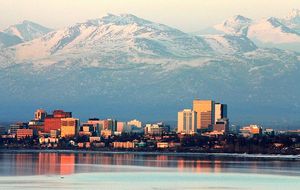As the weather starts to cool off many of us will be looking for the most affordable and efficient heating system to heat our homes. Although there are many different methods of heating homes this winter, this article will focus on pellet stove heating and oil heating. As a New England resident and former home improvement store worker I can say that oil heating and pellet stove heating are the most popular methods for heating homes in harsh winter environments.
Pellet Stove Heating
Pellet stoves work by feeding the hopper attached to the pellet stove, compressed hardwood sawdust, which is the byproduct of construction and wood manufacturing. On most stoves, the pellets are time released, either mechanically or electronically, to deposit pellets until the desired temperature is reached. On stoves with a glass window, you can see the pellets burn, which is a pleasant sight, but not as good as a woodstove. The stoves are highly efficient and easy to use, but have trouble heating larger houses without additional expensive additions.
Pros
1. Pellet stoves regulate the desired temperature so that it will burn more fiercely when the temperature is cooler, and burn slower when the desired temperature is met. The large hopper ensures that the unit will burn continuously without the need to be refilled during the night, or constantly during the day. One bag of pellets can burn almost 18 hours, which is great for the price and manual labor involved.
2. The pellets are very clean and easy to load; there is virtually no mess besides the leftover bag, which can be recycled or thrown out.
3. The pellets are recycled wood sawdust that is compressed, which means that using a pellet stove is not as damaging to the environment as gas or oil. Hardwood compressed pellets burn the longest, thus eliminating any fears about them burning quickly or inefficiently.
4. Pellets do not take a long time to heat up and will heat up a small room very quickly, and will eventually heat a small house in 30 minutes to an hour. The fan that is built into the pellet stoves delivers warmth to the surrounding area without being loud; it is a very efficient system. There are also additional fans that can be purchased to help spread the warm air around the house in a more efficient manner.
Cons
1. The bags that pellets arrive in are typically 40lbs, which can be a lot of weight for some people. Having loaded and displayed thousands of these bags myself, I can say that they are a real workout to lift and stack.
2. The pellet system is an investment and stoves run from about $1,000 (lower end) to well over $5,000 for a higher end stove. The smaller stoves are great for single room heating, but if you wish to heat the entire house, you will have to buy a larger, more expensive stove.
3. The stoves run on electricity, which means you will have to factor in this additional cost to the stove.
4. Pellet stoves are incredibly complex machines that require professionals to repair, which can be an inconvenience if the machines break. If you decide to fix the machine yourself, you can void the warranty.
5. If pellets are in short demand their price can increase, especially when construction is down, which can turn purchasing a pallet of pellets from a cheap endeavor to the same price as oil.
We are mostly family with the concept of using a furnace that forces the warm air produced into heaters that are distributed throughout the house. The concept of oil heat can be a great way to warm an entire house since one thermostat can be used for smaller homes, and two thermostats can be used for a larger house. Although oil heating is highly efficient, oil prices have been raising, which makes oil heating increasingly expensive.
Pros
1. Many companies specialize in oil heat and it is the most commonly used method of heating in America. Oil heat is efficient and almost carefree because it does not require any manual labor or effort besides turning up the thermostat.
2. Oil heat is good at heating an entire house quickly, whereas, pellet stoves heat one room quickly, and take a while to heat the entire house.
3. Oil heat is installed in most homes, which means there are no expensive stoves to purchase.
Cons
1. Although widely debated, the burning of oil is not seen as a green environmental practice.
2. The price of oil fluxgates greatly, and in recent years has been very expensive, and not economical for the average family.
Sources:
Personal experience selling both methods of heating at a home improvement store




